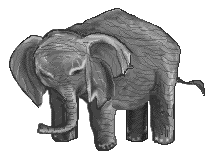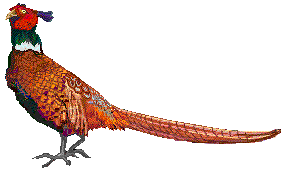LinkExchange Member
The Elephant
The elephant is largest land living mammal, which a long time ago they roamed every landmass except Australia and Antarctica. Two extant species, the Indian elephant, of India and Southeast Asia, and the African elephant, ranging south of the Sahara, are now limited to tropical forests, savannas, deserts, and river valleys. The Indian elephant reaches heights of 10 ft tall and the African elephant, 13 ft tall.
The boneless, muscular trunk, is the most distinctive feature of elephants, is actually a greatly elongated upper lip and nose used to convey grasses, leaves, and water to the mouth. Present-day elephants consume as much as 495 pounds of forage a day in this manner and drink as much as 50 gallons of water, drawing it through their nostrils and squirting it into the mouth. The trunk is also used to trumpet calls, pull down trees, rip off foliage, and draw up dust for dust bathing. It is also a highly sensitive organ, which the animals raise into the air to detect wind-borne scents. By means of fingerlike lobes on the end of the trunk and by the sucking action of the two nostrils, elephants can pick up and examine small objects.
The tusks, which are deeply embedded in the skull, are actually enormously enlarged incisors. Record tusks of the male African elephant have measured 10.5 ft long. Elephants have only four molar or grinding teeth, one to each side of the upper and lower jaws; each is a massive plate about about 12 inches long and 4 inches wide. When worn down by the coarse vegetation that elephants eat, these teeth are replaced by larger ones that shift forward from the rear of the jaws. At about 40 years of age, the animal's fina and largest molars come into position and last for about 20 years. Elephants' longevity is comparable to that of humans.
The African elephant can be quickly distinguished from the Indian elephant by its greater size and its larger ears, which may reach a length of about 5 ft from top to bottom. The African elephant is tallest at the shoulder, has more wrinkled skin, and bears tusks in both male and female. The Indian elephant is tallest at the arch of the back, bears tusks in the male only, and has one lobe instead of two on its trunk.
Despite their great weight, which in African elephants reaches 15,400 pounds and in Indian elephants reaches 11,000 pounds, elephants walk almost noiselessly and with exceptional grace, their columnar legs keeping their bulk moving forward in smooth, rhythmic strides. A thick cushion of resilient tissue grows on the base of the foot, absorbing the shock of the weight and enabling the animal to walk high on its hooflike toes. Elephants normally walk about about 4 mph and can charge at up to 25 mph.
The great ears of the African elephant are probably used for ventilation and visual communication as well as for hearing. The eyesight is poor, the eyes being comparatively small and fixed on the animal's large and relatively immobile head. The most sensitive organ is the trunk, which is frequently at work, picking up scents of food and danger from the ground and the air. Observers first noted in the 1980s that elephants produce, with their nasal passages, rumbling sounds below the range of human hearing. Because such sounds travel well and because elephant hearing is better at low frequencies, the animals very likely use these sounds to communicate with one another over longdistances.
Elephants are gregarious and keenly sensitive to one another's calls and movements. They associate in herds of 15 to 30 or more usually related members led by an old female, called a matriarch. Herds of Indian elephants are usually made up of females, immature elephants, and one old bull; those of African elephants may also include mature bulls. Bulls driven from herds live alone or in bachelor herds. Elephants commonly feed in the morning, evening, and at night and rest during the middle of the day.
Cool Facts
Everyone knows what an elephant is but few know about their personalities. They can be very shy or extremely aggressive. Because of these changes in behaviour and their speed and strength it is always wise to give them all the room they want. I once saw a photo in a Nairobi car rental shop that explained this best. The photo was of an elephant carrying one of their rental cars, a Volkswagen Beetle, full of screaming people down a dusty road. Talk about on picture is worth a thousand words!

